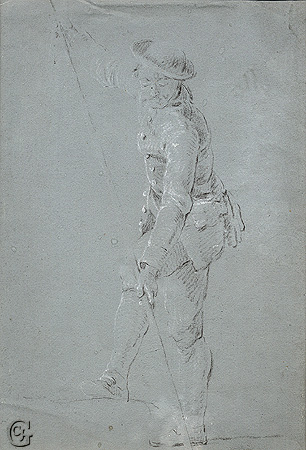Affordable Drawings
from the 16th through the 20th century
from the 16th through the 20th century
- Vasari, Seven Bishop Saints
- Passarotti, Male Nude Study
- Castello, A Decapitation
- Wildens, A Hilly Path
- Florentine School , Floral Ornament
- Procaccini, Head of a Soldier
- French School, Head of Hercules
- Vlieger , Fishermen
- Gargiulo , Elevation of Saints
- Roos, Cattle and Sheep
- Cabel, River Landscape
- d'Onofri , Trees in a Landscape
- German School, The Coronation of the Virgin
- Heemskerck, Peasants Drinking
- Piola, St. Raymond
- Moucheron , Classical Figures in a Grove of Trees
- Chaufourrier, Solfatara
- Lantara , Storm over a Village
- Volaire , Neapolitan Boatman
- Monogramist Vh , Woodland Grove
- Bolognese School, Seated Warrior
- Galliari , Stage Set: Courtyard of a Farm
- Duclaux , Plants Growing in a Field
- Cruikshank , Standing Male
- Altmann , Wine Taster
- Decamps, Trees at the Villa
- Nanteuil , Two Figures
- Bodmer, Partridges
- Harpignies , Trees
- Marsaud, Harlequin
- Dehodencq, Three Sketches
- Delauney, Fruit Tree with Birds
- Dansaert , Brawl in a Tavern
- Chapu, Studies for ’’Une Source’’
- Vannutelli, Two Women Seated in a Church
- Lepère, Studies of Ladies Shopping
- Béjot, Pont de l'Alma
- Henricus, Japonisme
- Vuillard, Mme. Vuillard, Sewing at Her Window
- Couturier, Carnival Scene at Night
- Brockhurst, Chinese Group
- Stankavich, On the Frontier
| 19. Pierre-Jacques Volaire, called Chevalier Volaire (1729-before 1802) Neapolitan Boatman |
(click on image to print)

Neapolitan Boatman
Black and white chalk on blue prepared paper, 364 x 261 mm.
The verso of the sheet is inscribed in ink “Chevalier de Volaire, Napoli.” Volaire was the student and assistant of Joseph Vernet and later painted port scenes in Toulon, Rome and Naples, where he lived from about 1769. A large group of similar drawings is in the Achenbach (see Four Centuries of French Drawings in the Fine Arts Museums of San Francisco, Nos. 136-180) and the catalog provides the description: “Volaire usually drew in black and white chalks on sheets prepared with pastel-tone ground. This toned background heightens the relief of his drawn figures and produces an effect analagous to silverpoint drawings and chiaroscuro prints of the fifteenth and sixteenth centuries.” An elegant sheet.
![]()